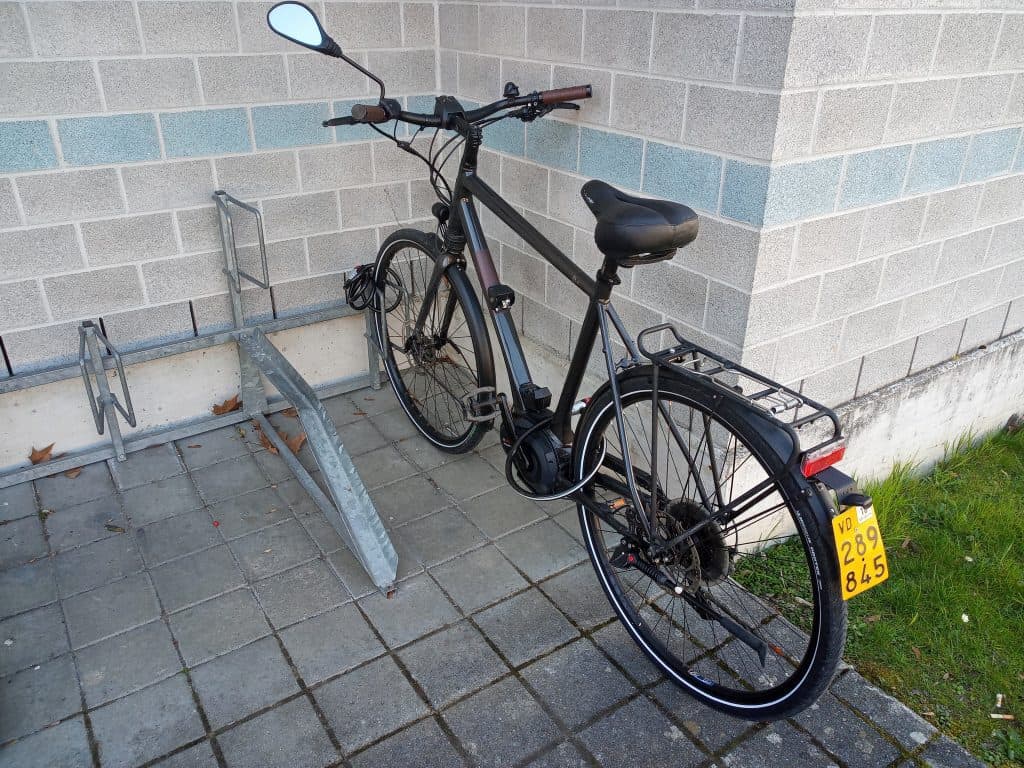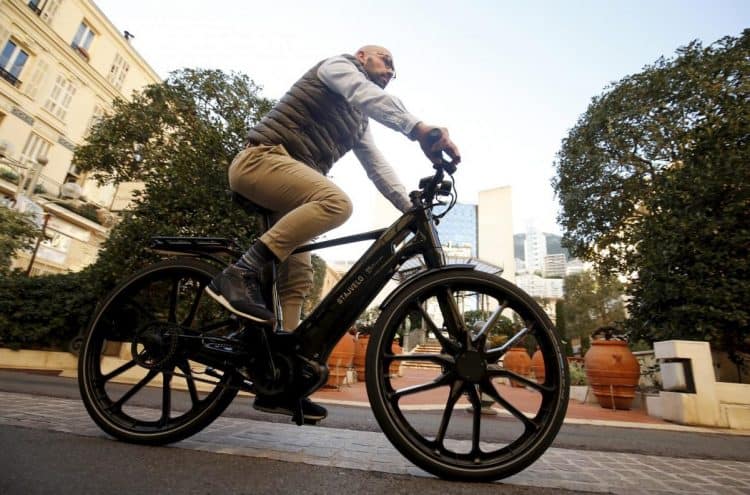Last Updated on July 19, 2023 by Igor Karni

It makes a lot of sense to get an electric bicycle nowadays. It’s a vehicle that lets you work out, and when you are tired you just use the electric features and reach your destination in no time. You can purchase an electric bicycle in just about any country, however, things differ from one region to the other as you can imagine.
Do I need a license to ride an electric bike? In most countries, electric bicycles are treated similarly to regular bicycles, e.g. the same regulations apply and e-bikes do not require a separate license. Still, in other countries regulations for e-bikes are different. Make sure you check license requirements in a specific country.
Even if you are allowed to buy an electric bicycle in most countries, they may have different laws and rules when it comes to using them. This is why you need to study all the local regulations as much as possible. Naturally, some of these rules tend to be more confusing than others.
That’s why you need to identify whether riding an electric bicycle is ok or not in your particular country. Sometimes it can be, other times not so much. It’s all about the situation at hand and how you choose to manage it. That’s why in this article we will study whether you are allowed to ride an electric bicycle in most countries, so try to keep that in mind.
Australia
The AVS defines the electric bicycle as a regular bicycle with an auxiliary motor of no more than 200W. Every state is allowed to come up with its own set of rules here. But the general consensus is that you don’t need registration or licensing.
That being said, starting with 2012 Australia did add a new e-bike category that goes past the 200W limit, in fact, it has 250W. The state of Victoria does require licensing for example if you have such a bike, but it won’t require a license or registration if you have one less than 200W. The same thing happens in Queensland too.
Read also: Best electric bicycle financing options in Australia. And, Rules and regulations for e-bikes and speed electric bicycles in Australia. And, Best specialized e-bike insurance companies in Australia.
Canada
All eight Canadian provinces – Alberta, British Columbia, Ontario, Manitoba, New Brunswick, Newfoundland, Nova Scotia, Quebec, Prince Edward Island, and Saskatchewan – allow you to ride an electric bicycle. What you have to keep in mind is that each one of these provinces may also have its own local requirements.
Normally your electric bike needs to have a motor of less than 500W. In some places, for example, Prince Edward Island, you need to pass a moped inspection. Depending on regulations in the specific province, you might also be required to wear a helmet.
Read also: Best known e-bike brands in Canada. And, Best e-bike financing option in Canada.
China
If you want to ride an electric bicycle in China, you don’t have to worry about getting a license. A few years ago you did have to register your electric bike, however, that law has changed.
This means you do not have to worry about riding your e-bike any longer. Also, Beijing did have a restriction for electric bicycles in some areas of the town, but that was removed in 2006.
Read also: Best known Asian e-bike brands (China, South Korea, Japan, Taiwan). And, Learn more about individual e-bike brands.
Denmark
You are allowed to ride an electric bicycle as long as you are 15 and wear a helmet. Denmark allows electrically assisted pedelecs, which are electric bicycles that can reach up to 45 km/h. This is quite an advanced achievement and probably one of the most relaxed e-biking regulations across many countries.
Sweden
In Sweden, there’s no need for a license unless the vehicle’s motor is over 250W and it goes well above 25 Km/h. If you stick to these requirements you can easily use your electric bike without any restrictions while visiting and exploring Sweden.
Finland
Unlike other countries, Finland is a bit more restrictive. Not only does the electric bicycle motor need to be under 250 W, but you also need to have a top speed of up to 25 km/h. The motor is also suitable only for assisting you, not for completely replacing your pedaling experience.
Norway
The situation in Norway is a bit better. Electric bicycles are seen as very similar to regular bikes. But there are some restrictions when it comes to construction, similar to the ones in Finland.
You might be required to have a feature that reduces the motor power just to stick with the national rules. Yet it’s still great that you can ride the electric bike as you see fit here and without any major restrictions.
Switzerland
The same limitations are in Switzerland too, however, they do allow you to get a license if you want to get a bike that has over 25km/h. Once you get the license, you can go with 45 km/h, and that is a major improvement.
Read also: Best known electric bicycle brands in Switzerland.
Turkey
It’s interesting to see just how different countries implement and use restrictions. In the case of Turkey, for example, e-bikes are required to automatically cut off the electric bicycle motor when the e-bike reaches 25 km/h. That means you get to focus a lot more on safe driving, all while avoiding any possible accidents that can appear when you go extremely fast.
United Kingdom
In the UK things are quite good actually. You have the regular EU restrictions too, and the rider needs to be at least 14. However, there’s no need for a license. While many countries are very restrictive, the UK is bringing in a bit more leeway. They did have some weight limits for e-bikes, but those were removed a few years ago.
Read also: Best electric bicycle financing options in the UK. And, Rules and regulations for e-bikes and speed electric bicycles in the UK. And, Best specialized e-bike insurance companies in the UK.
Hong Kong
In Hong Kong, electric bicycles are not allowed in public areas. You can’t register them in any way, and that’s definitely a bit sad. However, you have to keep in mind that using this type of vehicle in the country is prohibited, so you want to avoid that at all costs.
India
As you can imagine, due to the numerous vehicles on the Indian roads, the country did implement e-bike regulations. In this situation, you do need an ARAI approval. However, if you have a vehicle below 250W and a speed less than 30 Km/h, you don’t need any kind of certification for it.
That being said, you do need to have the product tested just to be safe. Yet if you fall within the requirements you will notice that there’s no need for insurance, wearing a helmet, or a license to drive.
Read also: Best known e-bike brands in India. And, Can an e-bike pull a trailer? How heavy?
Israel
Israel comes with similar restrictions as, for example, Sweden. But the e-bike also needs to satisfy the European Standards EN15194. Thankfully, if you have a bike with up to 250W and a speed of 25 km/h max, you won’t need any type of licensing or insurance, which is always an important option to keep in mind!
Japan
Thankfully, electric bicycles are seen as regular bicycles here, so you don’t need a license to use one. That being said, the interesting thing is that the requirements include things like power generation from a motor that can’t be modified with ease as well as a power assist mechanism. It’s always a very good idea to use protective equipment if you can, although you are not required by law to do that.
USA
In the US, the US Consumer Product Safety act states that tricycles and electric bicycles that have a low speed are considered consumer-level products. Every state has different rules when it comes to licensing, which is why you need to study the situation before actually going on the road with the electric bike.
In some states, electric bicycles are treated the same as mopeds. For example, Alabama doesn’t have a maximum speed limit, but it does have a max power of 150 CC. You do need a helmet, not to mention you need to be over 14 as well. You need to have an M-class license. A similar situation appears in Alaska too, although in this case, the max power has to be 50 cc.
Read also: What are the rules & regulations for electric bikes and speed e-bikes in the USA? And, Best known e-bike brands in the USA.
In other states, there are maximum power restrictions, while those states do not require a license. These include Arizona, California, Colorado, Florida, Georgia, Illinois, Iowa, Kansas, Maryland, Minnesota, Mississippi, Nevada, New Hampshire, Ohio, Oregon, Pennsylvania, Texas, Utah, and Washington.
Yet others either require a license, or they don’t have any restrictions or regulations related to this.
The thing you have to keep in mind is that you have to study the local rules just to ensure that everything is ok. The vehicle wattage restrictions differ quite a bit, some states have a CC restriction, others will go for a 750W or 1000W restriction.
One interesting thing to notice here is that there are no particular speed restrictions. However, they didn’t add those because wattage restrictions will already place you under particular speed limits. So that’s a very important aspect to consider and keep in mind.
Russia
A lot of people will like the electric bike rules in Russia mainly because they are straightforward. Basically, you can have an electric motor on the bike with 250W or less that turns itself off when you tend to go over 25 km/h. And that’s all there is to it. There’s no need for a driver’s license or anything like that. The rules are great and straightforward here, and they bring upfront some unique benefits.
Read also: Electric bicycles for Russian-speaking readers (site in Cyrillic).
Philippines
Here you have the best approach toward electric bike laws. And in this case, there are no laws related to this. This means you can easily use an electric bike whenever and however you want. They even included bike-like vehicles in this rule too, which is quite an interesting thing to see and explore.
That being said, some regions can have their own requirements, so you might want to check some localized requirements just to be safe and avoid any hassle.
New Zealand
In the case of New Zealand, any vehicle with a motor under 300W is seen as a non-motor vehicle. That means you will have the same rules as bikes. If the vehicle’s power is over this wattage, then you will have to get a license and register your electric bike. However, you just need a helmet if your vehicle power is under 300W.

Why are there so many differences?
The reason is simple, every country has its own traffic rules and requirements. In some countries such as China or India, the traffic is very hard to control due to the huge number of cars on the road.
That’s why you will find some major differences in e-bike regulations. But for the most part, regulations stay similar. Even if the wattage is a bit different, at some point when the electric bike is too powerful you will need a license for it, and you will have to register the bike too.
And yes, there are certain safety requirements too. Most countries either require you or recommend the use of a helmet. This is for a very good reason because you do need all the protection you can get when you use such a vehicle. While this is not mandatory, you do need to assess your current driving experience and improve it with some safety gear, just to be safe and away from any harm.
As you can see, aside from a few regions like Hong Kong, you can use an electric bike just about anywhere in the world. Sure, there are some restrictions here and there, but you can still enjoy the use of an electric bike without that much of a hassle.
Easy Fact: Also, rules and regulations change as e-bikes become more popular. Make sure you check the latest regulations in the region you plan to use your e-bike, as current rules might have changed from the ones described in this article.
Related questions
Why would one want to ride an electric bike? There are lots of great things about using such a unit. The first thing is that you can reach any destination you want a lot faster. It also offers the perfect combo of a regular bike and an additional unit that helps you when you are very tired.
On top of that, electric bicycles are designed to be very convenient and reliable. They work amazingly well, while also offering the consistency and value that you might need.
Read also: Here is why e-bikes are really cool. And, How to select the best city e-bike (with examples)?
Can you ride an electric bike with no license? In most countries and states electric bikes can be operated without a license as long as they meet specific requirements. Check the requirements of a country or state, where you would like to ride your e-bike.
The most common requirements include motor power not above 200-250W and maximum e-bike speed not above 25 km/h.
Can I ride an electric bike on bike paths? Regulations in most countries consider electric bikes as regular bicycles. This means that you can take your e-bike on bike paths without any restrictions.
Still, there are countries and states, in which either treat e-bikes as mopeds or have other limitations or licensing requirements. Make sure you check specific regulations for e-bikes in the location where you would like to ride them.
Let us know how we are doing! Have another question or a recommendation for us? – reach us via this contact form.
Igor is a sustainable mobility and green energy advocate. His mission for Easy E-biking is to help make electric cycling simple, practical, and fun. Follow him on Facebook and LinkedIn.




